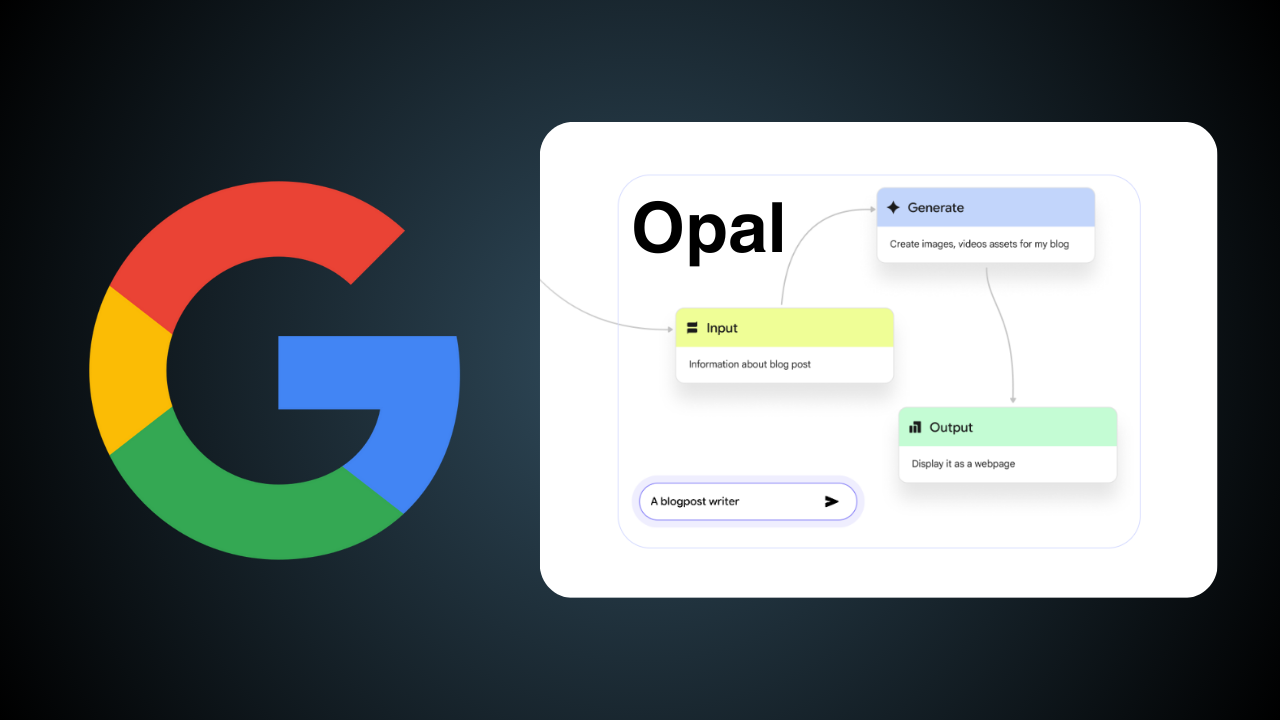Google has just launched Opal, a new AI tool that helps you build apps. With Opal, Google is jumping into the fast-growing “vibe-coding” market. You can try Opal for free in the U.S. through Google Labs. This new tool will compete with other popular app-building tools like Lovable and Cursor.
The market for AI coding tools is getting bigger every day. “Vibe-coding”, a term from computer scientist Andrej Karpathy, lets users describe an app idea in plain language, and the AI builds it.
The Vibe-Coding Revolution
Vibe-coding is changing the way we make software. Instead of writing code, you just say what you want. The AI does the rest. This makes it possible for anyone to build an app, not just people who know how to code. By 2025, it’s expected that 70% of all new business apps will be made with these kinds of tools.
Why is Vibe-Coding So Popular?
- Not Enough Coders: There aren’t enough people who know how to code to build all the apps we need. AI tools can help new coders get started faster.
- It’s Fast: Companies can build and release new apps much more quickly.
- More Apps are Needed: As the world becomes more digital, companies need more and more apps. AI helps build them faster.
What is Google Opal?
Google Opal is a tool for making small web apps by just describing what you want. It uses Google’s AI to turn your words into a working app.
Key Features
- Build with Words: Just describe your app, and Opal will build it.
- Remix: You can start with an app that someone else has already made and change it to make it your own.
- See How it Works: A special feature of Opal is that you can see how the AI builds your app, step-by-step. This lets you change things and understand how it all works.
- Share Your App: Opal lets you put your app on the internet so you can share it with others.
The Competition
Google is not the only company making these kinds of tools.
- Lovable: A very successful startup with over 2.3 million users.
- Cursor: An AI code editor that is worth a lot of money.
- Replit: An online coding platform with over 30 million users.
Even big companies like Canva and Figma are adding AI coding features to their products.
Google’s Plan
With Opal, Google wants to make it easier for more people to build apps. By making a tool that is easy to use, Google is hoping to attract:
- Business people
- Designers
- People with new ideas
- Teachers
What This Means for the Market
Google’s new tool is a big deal for the vibe-coding market. It could lead to:
- More Trust: Businesses might be more willing to use these tools now that Google is involved.
- Faster Changes: The competition will push all companies to make their tools even better.
- New Rules: Google could help decide how these kinds of tools should work in the future.
Challenges for Opal
Opal will have some challenges to overcome:
- Technical Problems: AI-made code can sometimes have problems that are hard to fix.
- Competition: Other companies like Lovable and Cursor have been around longer and have a lot of users.
The Future of Vibe-Coding
The vibe-coding market is going to get much bigger, and Google’s Opal will probably help it grow even faster. This is not just about new tools; it’s about changing the way we build software. For businesses, now is the time to start exploring these new AI tools.
FAQ
What is vibe-coding?
Vibe-coding is a way to develop software where you describe your app idea in plain language, and an AI builds it for you.
How is Google Opal different?
Opal’s visual workflow editor is its key feature. It shows you how the AI builds your app, and you can edit each step.
Do I need to code to use Opal?
No, Opal is designed for everyone, including non-technical users.
Is Opal free?
Opal is currently available for free through Google Labs in the U.S.
What can I build with Opal?
Opal is for creating small web apps, like prototypes, simple business tools, or educational apps.
Will vibe-coding replace programmers?
It’s more likely to be a tool that helps programmers, rather than replacing them. It’s great for simple apps and prototypes, but complex software will still need traditional coding.
